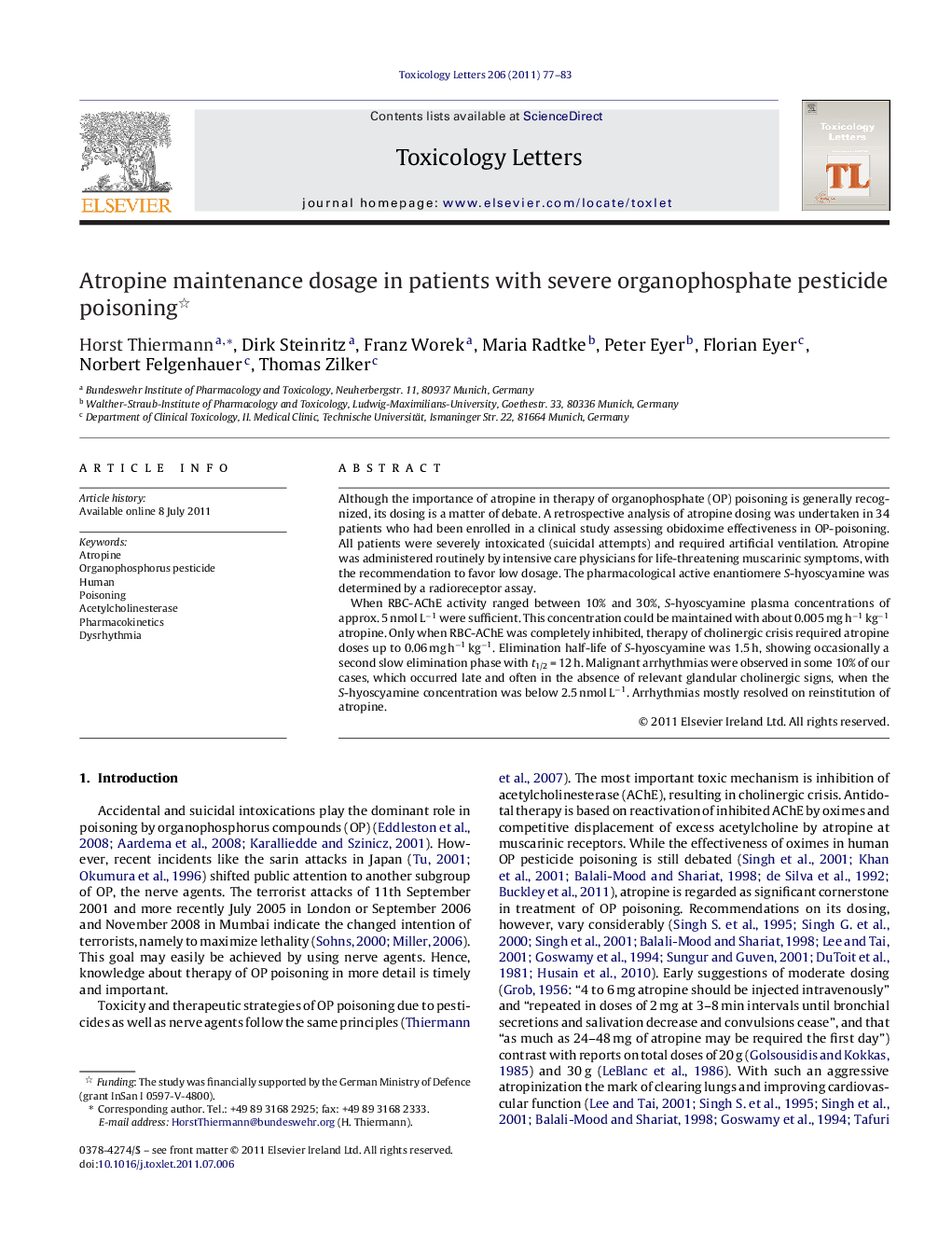| Article ID | Journal | Published Year | Pages | File Type |
|---|---|---|---|---|
| 2599950 | Toxicology Letters | 2011 | 7 Pages |
Although the importance of atropine in therapy of organophosphate (OP) poisoning is generally recognized, its dosing is a matter of debate. A retrospective analysis of atropine dosing was undertaken in 34 patients who had been enrolled in a clinical study assessing obidoxime effectiveness in OP-poisoning. All patients were severely intoxicated (suicidal attempts) and required artificial ventilation. Atropine was administered routinely by intensive care physicians for life-threatening muscarinic symptoms, with the recommendation to favor low dosage. The pharmacological active enantiomere S-hyoscyamine was determined by a radioreceptor assay.When RBC-AChE activity ranged between 10% and 30%, S-hyoscyamine plasma concentrations of approx. 5 nmol L−1 were sufficient. This concentration could be maintained with about 0.005 mg h−1 kg−1 atropine. Only when RBC-AChE was completely inhibited, therapy of cholinergic crisis required atropine doses up to 0.06 mg h−1 kg−1. Elimination half-life of S-hyoscyamine was 1.5 h, showing occasionally a second slow elimination phase with t1/2 = 12 h. Malignant arrhythmias were observed in some 10% of our cases, which occurred late and often in the absence of relevant glandular cholinergic signs, when the S-hyoscyamine concentration was below 2.5 nmol L−1. Arrhythmias mostly resolved on reinstitution of atropine.
► Pharmacokinetic data of atropine in OP poisoned patients are presented. ► At RBC-AChE activity between 10% and 30% low doses of atropine were sufficient. ► Malignant arrhythmias were observed in several patients with OP poisoning. ► Arrhythmias mostly resolved on reinstitution of atropine.
